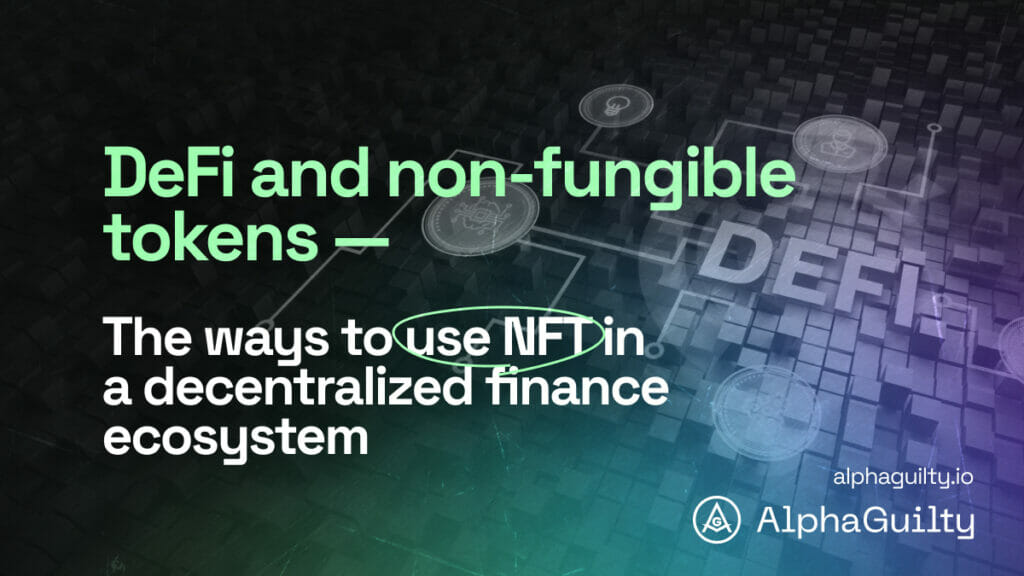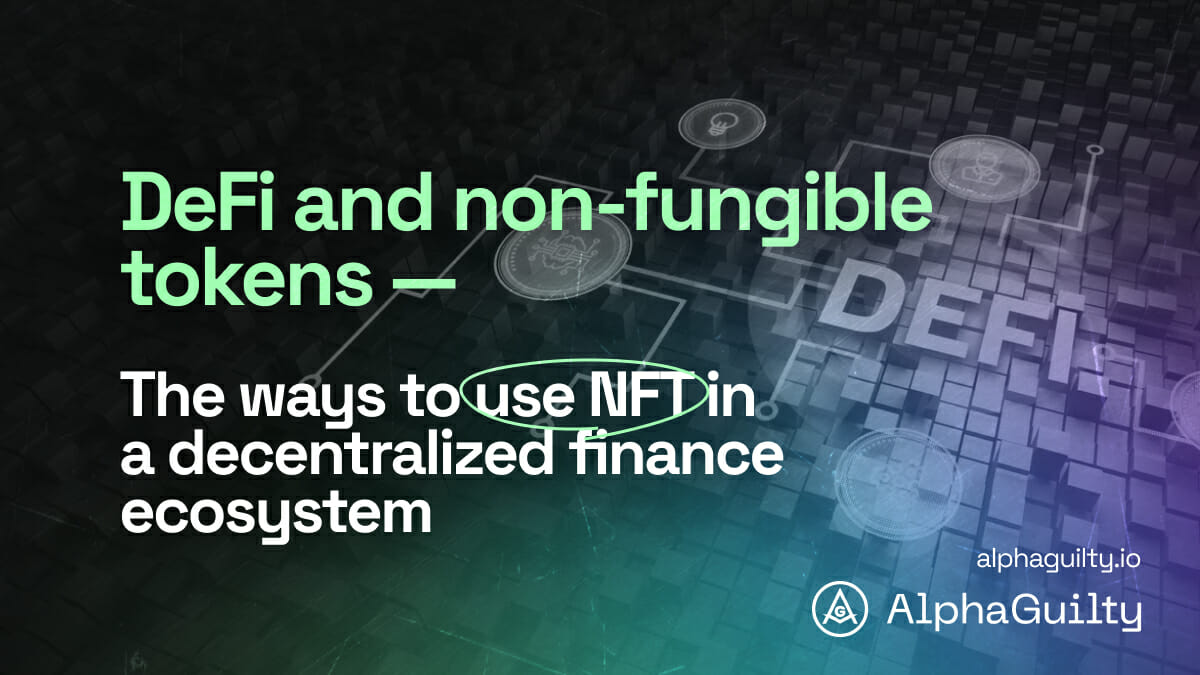
The blockchain consists of many of the same tokens that can replace each other. Therefore, even if the components of the blockchain are replaced, the system can continue to function as before without any changes. But there is another type of token called NFTs, which was created in 2017 based on Ethereum smart contracts.
At the same time, DeFi refers to a financial system that operates on a decentralized, permissionless blockchain, such as Ethereum, and is built using smart contracts. So, NFTs and DeFi are the two most commonly used terms in conversations about cryptocurrency and blockchain technologies. The world continues to explore the possibilities of these two fascinating fields of innovation, but how do NFTs and DeFi intersect? This is a very interesting topic and we will discuss it in detail today.

What are NFTs used for?
NFTs or non-fungible tokens are also one of the components of the Ethereum blockchain. It is impossible to split or replace NFTs because they are unique and differ from other blocks in the Ethereum network. This allows a person or company to secure their rights to a unique object that has been used successfully by artists and art venues. So let’s look at the main ways non-fungible tokens are used:
- Non-fungible tokens on the Ethereum blockchain are used to represent unique digital assets such as art, music, video, and other forms of creative work.
- These tokens are often bought/sold as collectibles, and their value can vary based on factors such as rarity, popularity, and historical significance.
- By allowing artists to retain control and receive ongoing royalties for their work even after it is sold, these tokens have the potential to transform property rights and royalty systems in the creative industries.
Converting files into non-fungible tokens is a secure way to use blockchains to streamline the processes of buying, selling, and trading while drastically minimizing the occurrence of fraud. But when looking at NFTs from a financial perspective, they can be viewed as a store of value, similar to more conventional assets such as gold or coins. In this sense, each token represents a unique value that may be subject to market variability.
So, the similarities between NFTs and conventional financial systems are greater than many people realize. Rather than viewing DeFi and non-fungible tokens as potentially opposing concepts, it is important to recognize that they can have a close connection. NFTs are already being integrated into financial processes, demonstrating the potential of combining with DeFi. To understand how this merger can benefit individuals in both the real world and the metaverse, it is important to have a clear understanding of the definition and purpose of the DeFi ecosystem.
What can you do with DeFi?
Today DeFi enables a range of financial activities similar to those offered by banks, such as earning interest, borrowing and lending, insurance, trading, flash loans, and others. Moreover, decentralized finance works faster, more efficiently, and with greater security through the use of blockchain technology (most often Ethereum).
Users interact directly with each other without third-party providers. In addition, blockchains allow for the elimination of time constraints — the system can be used by any person 24/7, all year round. Let’s take a closer look at the definition of decentralized finance:
- DeFi operates as a financial system, with the involvement of various blockchains, including Ethereum, to enable its ecosystem.
- DeFi provides decentralized financial management solutions by incorporating tools like smart contracts.
- The system of decentralized finance is completely transparent and open, unlike the alternative centralized services.
So, the definitions of non-fungible tokens and DeFi clearly show the possibilities of discovering the link between the two. But where do you start to see the connection between DeFi and NFTs? Looking at their definitions, you can see that NFT tokens offer a unique way to store value and DeFi space provides a decentralized infrastructure to unlock value.
What are smart contracts in blockchain?
As you may know, smart contracts are self-executing programs that run on a blockchain (Ethereum or another). They enable the automation of contract execution, validation, and enforcement without the need for a third party. In the context of our topic today, it is very important to reveal another thing. So, smart contracts play a critical role in both DeFi projects and NFT tokens:
- In DeFi, smart contracts are used to automate lending, borrowing, trading, and staking, ensuring that all operations are performed correctly and transparently without the need for a broker.
- In the case of NFTs, smart contracts are used to define the unique characteristics of the asset, such as proprietary rights, transferability, and authenticity. Smart contracts allow token creators to program certain conditions, ensuring that the artist receives a share of the profits when the token is sold/traded.
In addition, DeFi protocols are sets of self-executing programs that are encoded into smart contracts on a blockchain like Ethereum or another. DeFi protocols use blockchain technology to provide a more secure and transparent way to conduct various operations. Now you understand why we touched on this topic.
How does NFT token help in DeFi?
Now NFTs can play an important role in the DeFi space by providing unique assets that can be used as collateral for loans, traded on marketplaces, and used in other financial apps. For example, NFT marketplaces can integrate with DeFi protocols to offer new financial applications and investment opportunities. Let’s explore the different use cases of non-fungible tokens in DeFi:
- Collateral for loans in DeFi. For example, a person can deposit tokens as collateral and borrow a certain amount of crypto, which they can then use for other purposes.
- Users can provide liquidity to DeFi protocols by staking their NFT, which earns them a share of the transaction costs generated by the DeFi protocols.
- NFT can also be used to create unique products in DeFi, such as prediction markets.
- By holding an NFT, users can participate in decision-making processes related to the operation of the DeFi platform, such as voting on proposals or allocating resources.
- NFT can be traded on marketplaces, allowing people to gain exposure to unique assets and providing new investment opportunities in the crypto field.

So, NFTs have emerged as a promising use case in the DeFi space, particularly on the Ethereum blockchain (with the introduction of ERC-20 tokens representing digital assets). NFTs can serve as proof of proprietorship for art and other unique assets, making Ethereum an ideal platform for creators to share and engage with collectors. With the ability to prove proprietorship, NFTs offer significant value propositions on the DeFi platforms. Most importantly, DeFi helps in revealing the value of a particular asset. The next few years will show how productive the process of merging NFT and DeFi technologies will be, and whether it will be able to attract new users to the ecosystem without any major problems for it.
